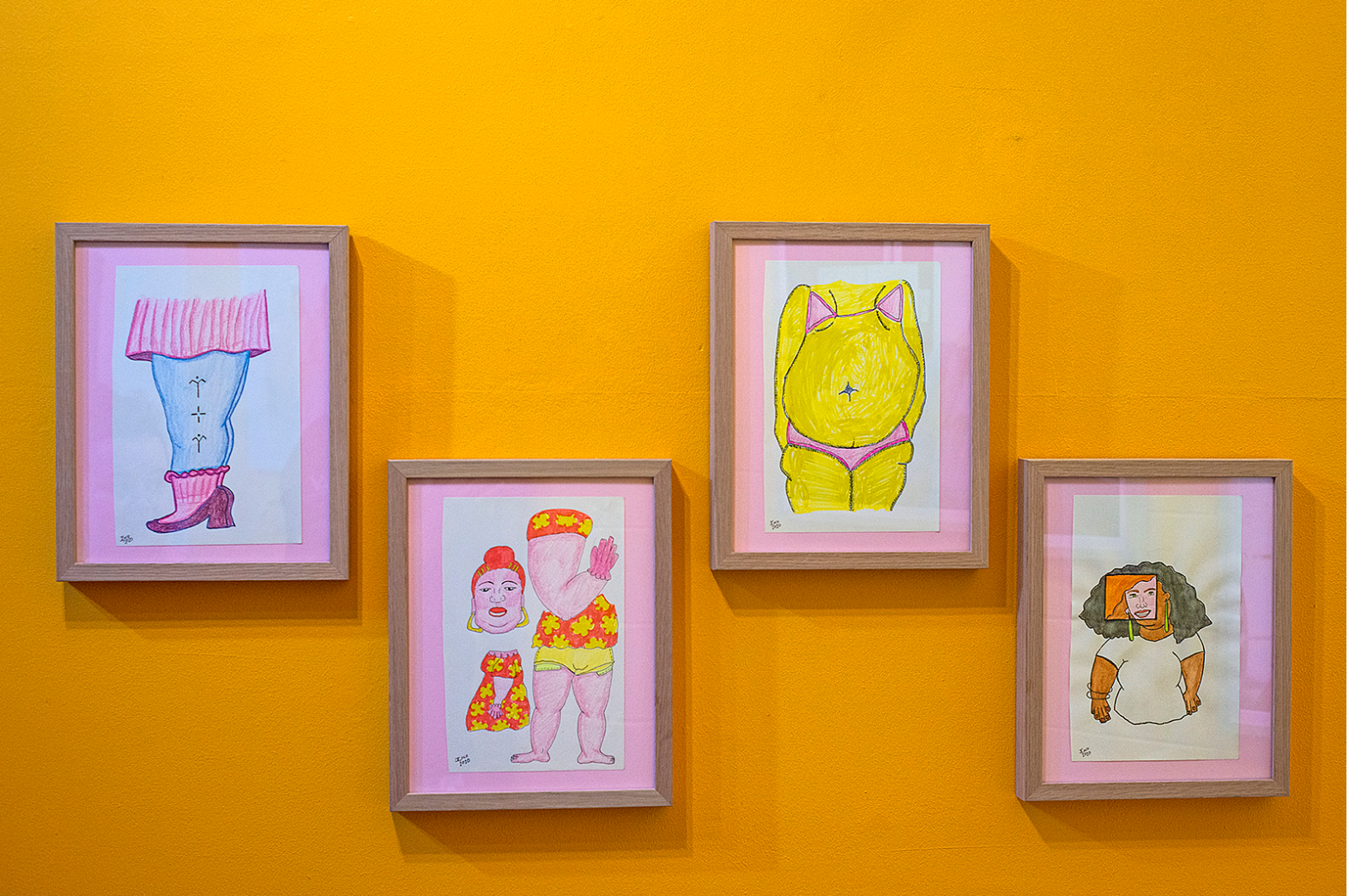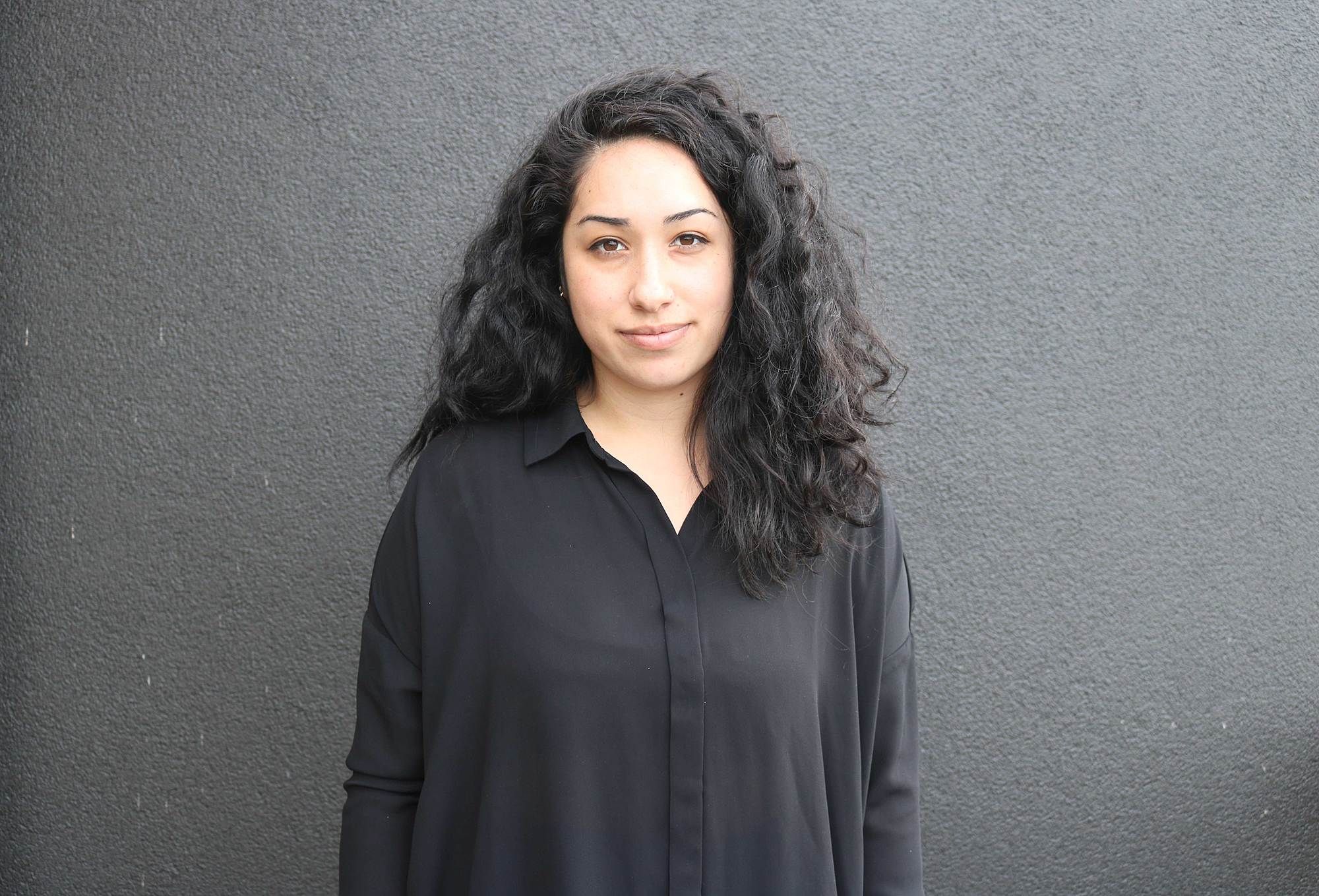Thick As: A Glowing Response to FAT
FAT, an exhibition at South Auckland gallery Vunilagi Vou, confronts fatphobia through art.
FAT, an exhibition at South Auckland gallery Vunilagi Vou, confronts fatphobia through art.
It was just my five-year-old daughter and me at home when she shouted to me in the kitchen from the lounge. “I’m so fat!” “What did you say?” I replied. “I’m so fat!” Hearing her say those three words triggered instant tears. So I hid round the corner and cried in private, of course. But more than that, those words triggered memories of my own body-dysmorphic behaviours and the self-hatred that has followed me most of my life. When I got myself together and asked why she’d said that, she told me it’s because “I just love food too much.” I cried again. I never wanted my child to be concerned with her body, or with eating. We’ve had many talks about bodies and brownness and Brown bodies, and Brown women’s bodies, far more than I expected to be having with her in her five years.
But what is it with that word fat and everything to do with it that is triggering for so many women? In part that’s what the latest exhibition, FAT, at Vunilagi Vou is asking. The exhibition, which runs from 5 – 29 February, includes the work of Louisa Afoa, Riki Tipu Anderson, Lissy Cole, Jessicoco Hansell, Infamy Apparel, Meagan Kerr, and Elyssia Wilson-Heti with Jermaine Dean. The exhibition and its month of public programmes and workshops are dedicated to “unpacking the word, the stigma, celebrating fat body experience and calling out fat phobia in all its forms!” It’s a “season of radical fat positivity!”
The exhibition itself contains largely photography, with Louisa Afoa’s Blue Clam (2018), a self-portrait in the style of Botticelli’s Birth of Venus, printed at almost life size and viewable from the street. Inside the gallery, the artworks include Meagan Kerr’s Fat bottomed girls, you make the rockin’ world go round (2013), in response to Dove’s highly criticised 2005 Campaign for Real Beauty, which sought to show “real bodies and real curves” as beautiful – but only size 14 and under. Infamy Apparel’s EAT (2020) is a series of photographs that push against the stigma of the fat body eating. Riki Tipu Anderson’s Mana Takataapui Motuhake series (2019), and Jermaine Dean and Elyssia Wilson-Heti’s Serenity in Cellulite (2019) add to the other photographic works in the show by bringing an almost surrealistic aesthetic. Beyond the photography, Lissy Cole’s Mirror, mirror on the wall (2020), a full-length mirror adorned with crochet flowers, asks visitors to look at themselves. Jessicoco Hansell’s Big Boned Chronicles series (2020), four illustrations of dismembered and brightly coloured bodies, is a great hand-drawn complement to the photographic work. (Hansell also recently launched Kuini Qontrol, which deserves a shout out). Inside the gallery is what could be Blue Clam’s sister work, Pink Flamingo (2018), where Afoa sits on an inflatable pink flamingo – the kind made famous by the Kardashians and Instagram influencers – on someone's back lawn.
I am not really sure how to think through my own internalised fatism, but the exhibition FAT is definitely forcing me to confront something.
The exhibition as a whole is an explosion of bodies which, through the wide-ranging images, in the first instance represents various aspects of the fat body experience – in fashion, in our own internal reflections, and through representation. And as a result, highlights the lack of fat bodies in mainstream media and also in art itself. While the body more generally has often been a subject for exhibition-making in New Zealand, it has largely been the Eurocentric body, or Brown bodies as they have been defined through a Eurocentric lens. In my research, the fat body experience of Brown women in Aotearoa has never been a subject for exhibition-making. FAT is a landmark.
In a sense, FAT is building a vocabulary, a visual and written grammar around the fat body experience specific to South Auckland. In a big way, the exhibition responds directly to fatism – systemic discrimination based on body size. Because of that I feel a need to rely heavily on the words of other people, in part because I am not really sure how to think through my own internalised fatism, but the exhibition FAT is definitely forcing me to confront something. In part, my need to refer to other people’s thoughts is because I don’t know the language I should be using either.
Fatism, fat stigma, fat bias, like many other forms of discrimination, is systematic and, as Ashlea Gillon (Ngāti Awa) recently wrote, it traverses “multiple facets of life, restricting access to employment, healthful environments and adequate health care.” Gillon writes, “Fat bias is endemic, and within a health context particularly hyper-medicalised. This stigmatisation is reflected in provider biases that elicit personally mediated fatism, and facilities and equipment that are inaccessible for fat people.”
Gillon’s writing, focusing specifically on “fat Indigenous bodies”, looks at how fatism intersects with sexism and racism, subjecting fat Brown women’s bodies to more scrutiny and surveillance than others. Because of this, Gillon advocates for a shift away from body positivity and toward body sovereignty. Body positivity, as she describes it, is a movement that “seeks to address the struggle for recognition, acceptance and equity that fat people and our bodies undergo, this movement, at times, can centre bodily (self) acceptance.” It is a movement that challenges Western beauty standards. It’s a movement that also places the onus of acceptance on those who are excluded. For Gillon, the “‘love yourself’ and ‘accept yourself’ narrative perpetuates the invisibilisation of (perpetrators of) inequitable power structures and oppressive systems that restrict and assign access to bodily acceptance, acknowledgement and value.”
For this reason, Black sociologist Tressie McMillan Cottom asserts that she is not, and can never be, beautiful, because beauty as we talk about it today just reproduces the existing social order, which is an idea for and by white women. For her to strive for acceptance in a system that we call ‘beauty’ is just her constructing “something that feels like liberation in an inherently oppressive regime.” That is because, as Cottom writes:
“Beauty has an aesthetic but not the same as aesthetics, not when it can be embodied, controlled by powerful interests, and when it can be commodified. Beauty can be manners, also a socially contingent set of traits. Whatever power decides that beauty is, it must always be more than reducible to a single thing.”
Ultimately, what Cottom ends on is a way of thinking and being that she describes as “thick”. She writes, “I had tried in many ways over the years to fit. I thought I could discipline my body and later my manners to take up less room. I was fine with that, but I learned that even I had limits when – in my pursuit of the life of the mind – my thinking was deemed too thick.” Cottom’s thickness is sovereign. Gillon’s body sovereignty is not only about loving yourself, but about having sovereignty and autonomy of your body. This is because understanding that “racism, sexism and fatism operate as colonial systems that re-present Indigenous peoples and re-structure access based on who has power is central to understanding what body sovereignty can be and how acknowledging it can create equity.”
As a rare space where the fat body experience is brought to the centre stage, the exhibition, Vunilagi Vou Director/Curator Ema Tavola tells me, has sparked many conversations with people involved in the show and gallery visitors. In dedicating Vunilagi Vou to these fierce sovereign bodies representing the diversity within the fat lived experience, these artists alongside Tavola are simultaneously celebrating themselves while forcing those of us looking to confront fatism as a system of power, which we as individuals uphold. It’s a bold and brave exhibition to start 2020 with. If this is a glimpse of Tavola’s curating for the rest of the year, then we’d best brace ourselves for a year of #realtalk. I leave the exhibition thinking back to my daughter, to all our conversations about Brown women’s bodies, and how grateful I am to be able to bring her to spaces like this.




